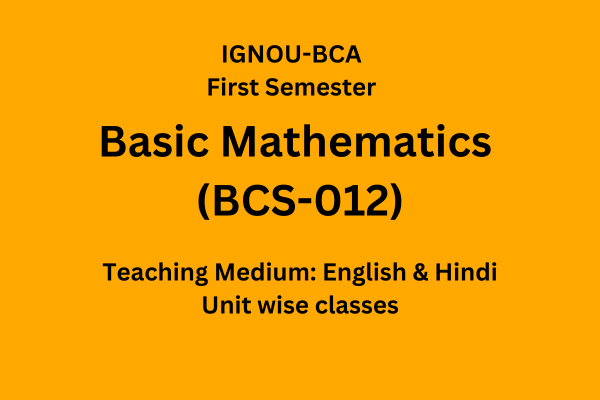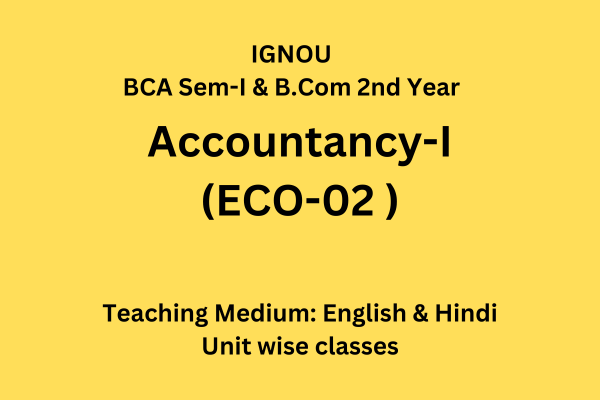About Course
Objectives:
The primary objective of this course is to introduce students some of the mathematics through which they can develop some mathematical maturity, that is enhance their ability to understand and create mathematical arguments. The secondary objective of this course is to prepare students for mathematical oriented courses in computer science such as discrete mathematics, database theory, analysis of algorithms etc.
- BLOCK-1: Algebra-I (Unit-1: Determinants, Unit-2: Matrices-1, Unit-3: Matrices-2, Unit-4: Mathematical Induction)
- BLOCK 2 : Algebra II (Unit 1: Sequence and Series, Unit 2: Complex Number, Unit 3: Equations, Unit 4: Inequalities)
- BLOCK 3: Calculus (Without Trigonometry) {Unit 1: Differential Calculus, Unit 2: Simple Application of Differential Calculus, Unit 3: Integration, Unit 4: Application of Integration}
- BLOCK 4: Vectors and Three-Dimensional Geometry (Unit 1: Vector-1, Unit 2: Vector-2, Unit 3: Three & Dimensional Geometry-1, Unit 4: Linear Programming)
The course is divided into four distinct blocks, each addressing essential topics with a systematic and progressive approach.
The first block, Algebra I, introduces determinants, matrices, and mathematical induction, covering fundamental concepts and their practical applications.
The second block, Algebra II, delves into sequences, series, complex numbers, equations, and inequalities, offering a well-rounded exploration of algebraic structures and their properties.
Moving on to the third block, Calculus (Without Trigonometry), the course navigates through the core concepts of differential calculus, its applications, and integral calculus. This block emphasizes real-world applications, providing a bridge between abstract mathematical concepts and their practical implications.
The final block, Vectors and Three-Dimensional Geometry, introduces vectors, scalars, and three-dimensional geometry, culminating in the exploration of linear programming. This section bridges the gap between algebra and geometry, showcasing the interdisciplinary nature of advanced mathematical concepts.
Throughout the course, students gain proficiency in mathematical reasoning, problem-solving, and critical thinking. The sequential structure of the units ensures a logical progression of difficulty and complexity, allowing learners to build a solid understanding before moving on to more advanced topics. The inclusion of real-world applications and practical examples enhances the relevance of the course, demonstrating the applicability of mathematical concepts in various fields.
In essence, this course equips students with a strong mathematical foundation, fostering analytical skills and preparing them for more advanced studies in mathematics or its applications in diverse professional fields. The well-organized curriculum and comprehensive coverage make it a valuable resource for individuals seeking a robust understanding of algebra, calculus, vectors, and three-dimensional geometry.
Skills You Will Gain
Mathematics
Database theory
Analysis of algorithms
Algebra
Determinants
Matrices
Equations
Inequalities
Calculus
Vectors
Problem-solving
Critical thinking
Real-world applications
Logical progression
Analytical skills
Advanced studies
Comprehensive coverage



 Beginner
Beginner 
